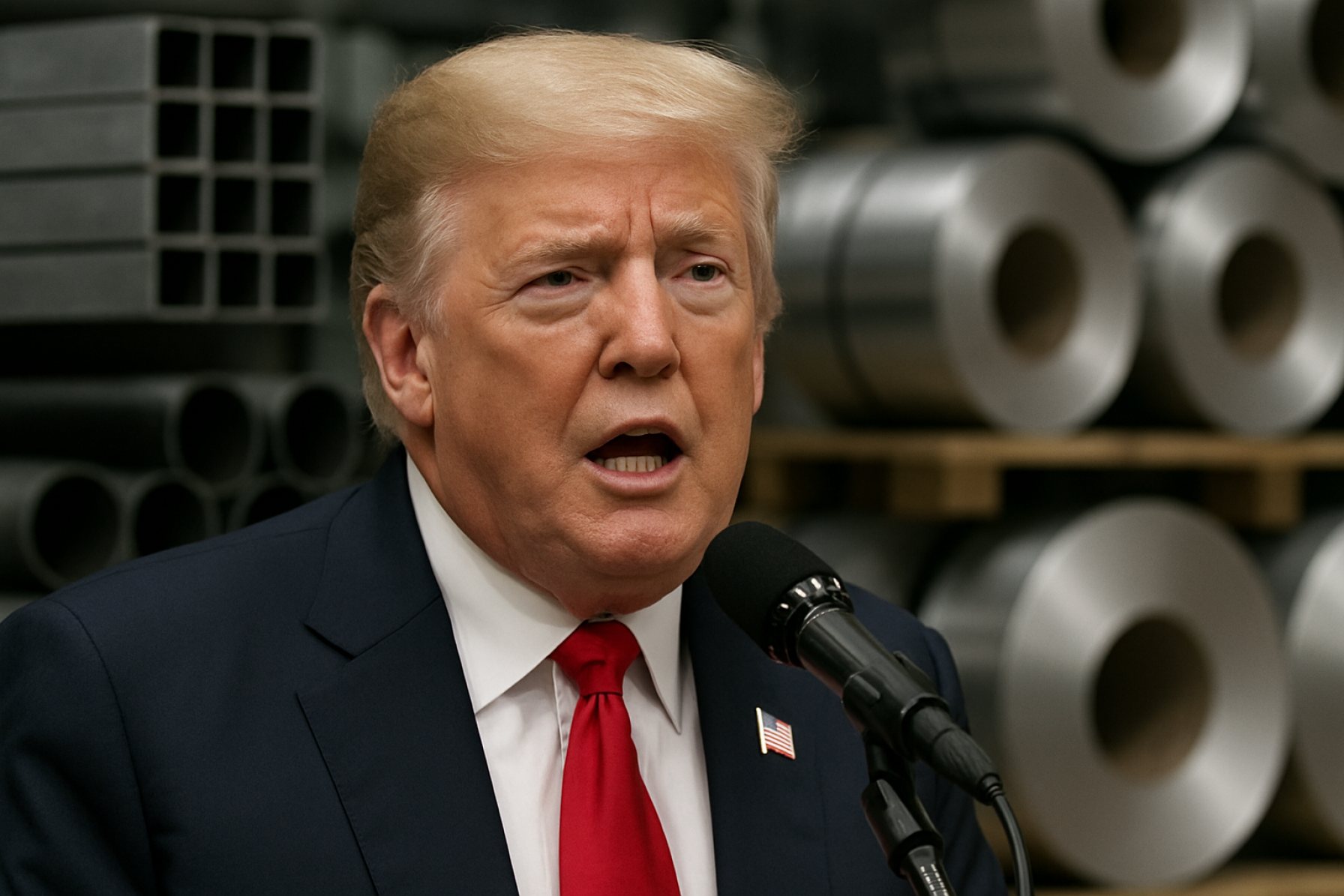America Goes All-In on Metal: Trump Hikes Steel and Aluminum Tariffs to 50% Amid Global Trade Tension
President Trump signs executive order to double tariffs on steel and aluminum, aiming to protect US industries and escalate trade battles in 2025.
- 50% Tariff on steel and aluminum imports takes effect June 4, 2025
- First time tariffs on these metals hit this level in US history
- National security cited as primary justification for the hike
Foreign metal producers are officially on notice. In a surprise move grabbing headlines worldwide, President Donald Trump signed a sweeping executive order Tuesday, doubling tariffs on steel and aluminum imports to a staggering 50%. The new measures take effect at 12:01 a.m. ET Wednesday, shaking up global supply chains and putting the world’s top exporters on red alert.
The dramatic hike targets low-priced foreign steel and aluminum—materials Trump says threaten the backbone of American manufacturing. The administration frames the move as an urgent defense of national security and local industry competitiveness.
This landmark decision follows escalating concerns among US steelworkers and manufacturers, who have long accused countries like China and Russia of flooding global markets with cheap, subsidized metals. The previous tariff of 25%—controversial, but already historic—now seems tame by comparison.
For real-time reactions and ongoing updates, keep an eye on the official White House and CNBC.
Why Did Trump Raise Tariffs on Steel and Aluminum in 2025?
Powerful global economic shifts have been reshaping trade in 2025. Persistent warnings from US industry leaders turned into lobbying pressure to defend American jobs. Top advisers told the President that unchecked foreign imports pushed US companies to the brink, threatening both factories and critical defense infrastructure.
From the Rose Garden, President Trump described the action as a necessary move to restore fairness and national security. By doubling the tariff, the administration hopes to deter “dumping”—when countries export excess, underpriced steel and aluminum to capture market share.
What Does a 50% Tariff Mean for American Consumers and Companies?
Raising the tariff will ripple through dozens of US industries. From auto makers to construction firms, any company relying on metal imports faces immediate cost hikes. Experts warn that while American steel producers may benefit in the short run, consumers could pay more for goods ranging from cars to refrigerators.
Economists also predict swift backlash. Major trading partners could retaliate with tariffs of their own, potentially affecting American exports and sparking a broader trade war. The question remains: Will these higher tariffs boost US manufacturing jobs or end up raising prices and inflaming global tensions?
Interested in market moves? Follow updates via Reuters and The New York Times.
Q&A: How Will This Impact Global Trade Relations?
Q: Can other countries hit back with their own tariffs?
A: Absolutely. Trade partners, especially the EU and China, are likely to strike back, imposing duties on American products. This tit-for-tat escalation could dent global trade flows and cost billions.
Q: Is this legal under international trade law?
A: The Trump administration claims national security exemptions. However, the World Trade Organization and foreign nations may challenge this move in court or through new trade barriers.
Q: Which industries stand to gain—or lose the most?
A: US metal producers are the clear winners, at least in the short term. Auto, aerospace, and heavy equipment manufacturers could see higher costs and thinner margins.
How to Prepare: What Should US Businesses And Workers Do Now?
- Watch for retaliatory tariffs that could bite US exports
- Track price changes on building materials and finished goods
- Reevaluate supply chains—look for domestic alternatives where possible
- Stay updated on evolving trade negotiations through Bloomberg
Stay ahead of the curve as America’s new tariff era unfolds—monitor the headlines, diversify your strategies, and be ready for change.
- ✅ Review supplier contracts ASAP
- ✅ Factor in new material costs for future bids and projects
- ✅ Follow official sources for the latest regulatory updates
- ✅ Advocate for your industry—contact lawmakers to share your concerns











